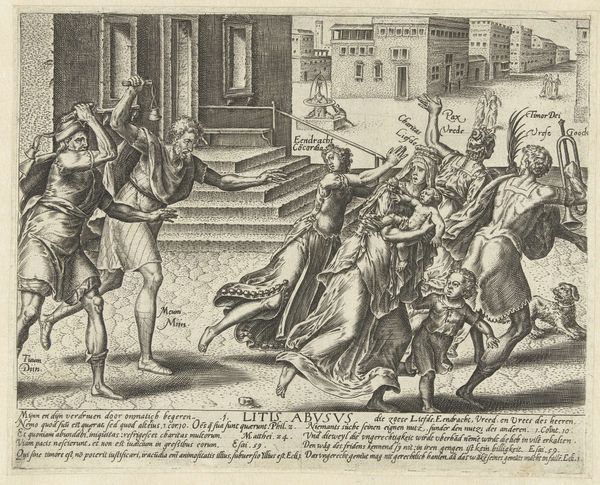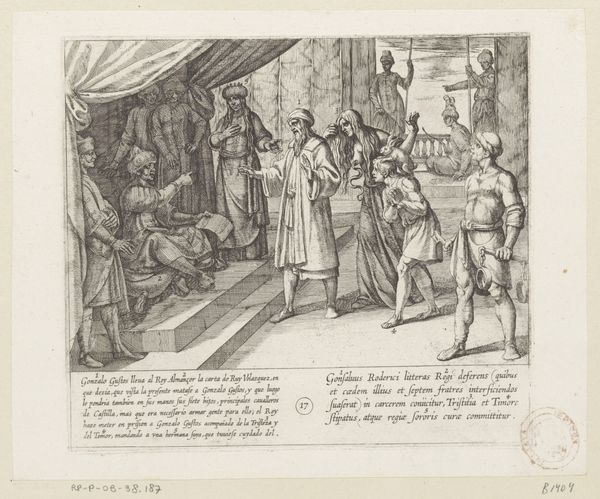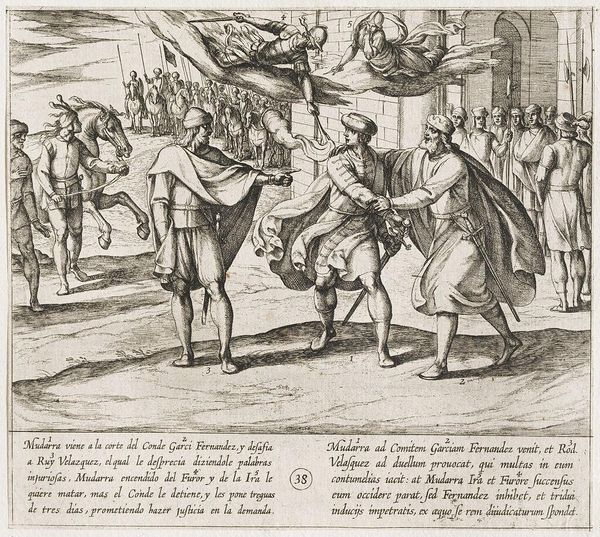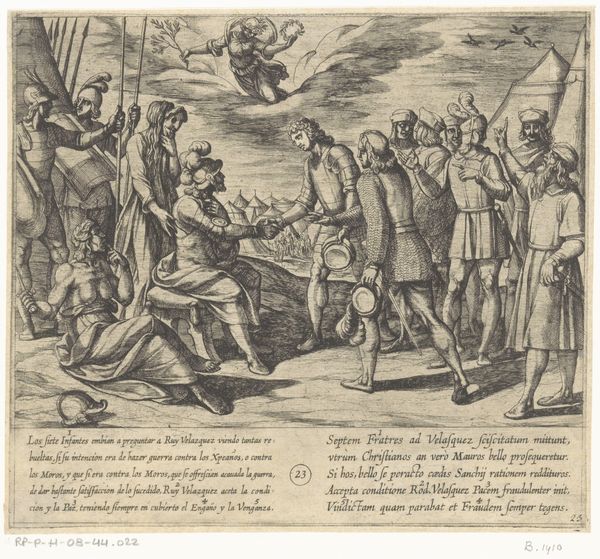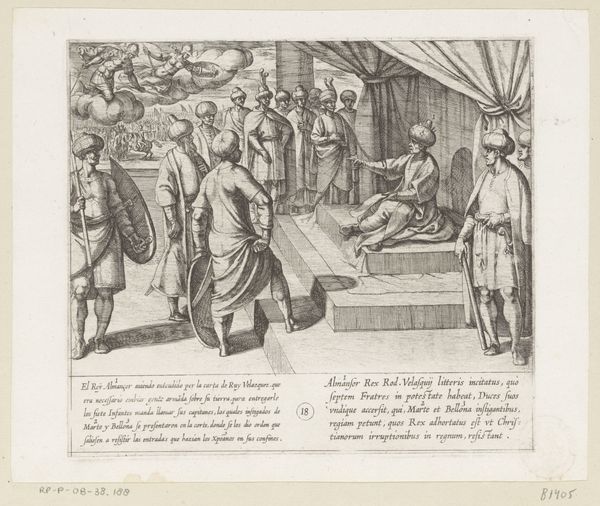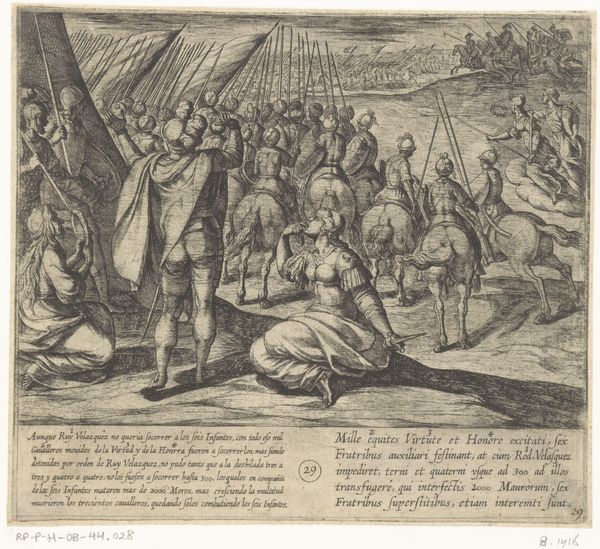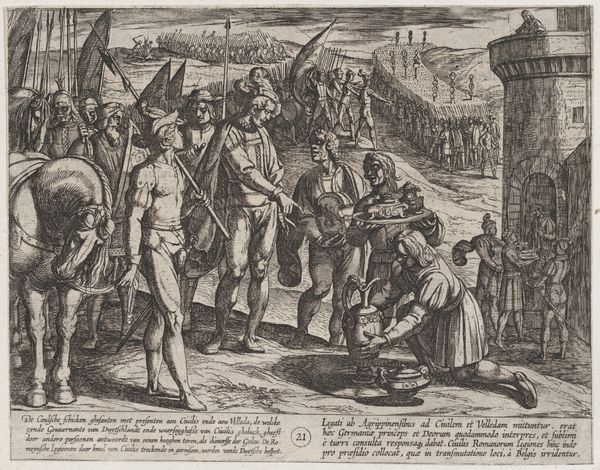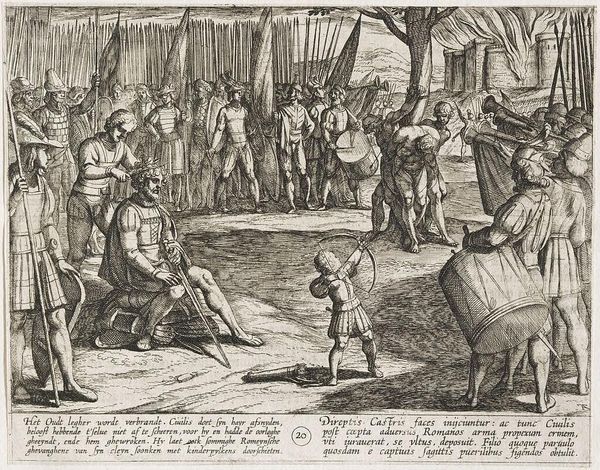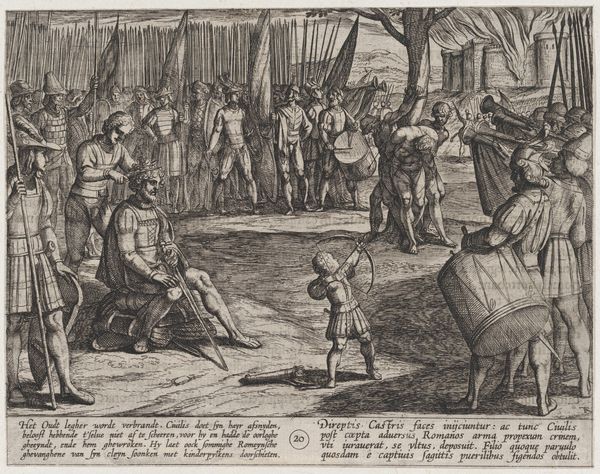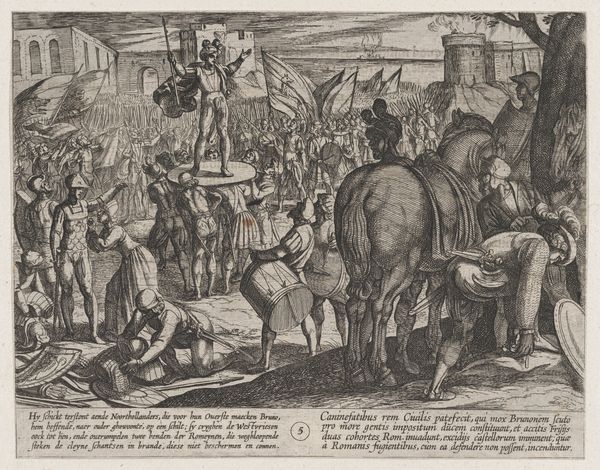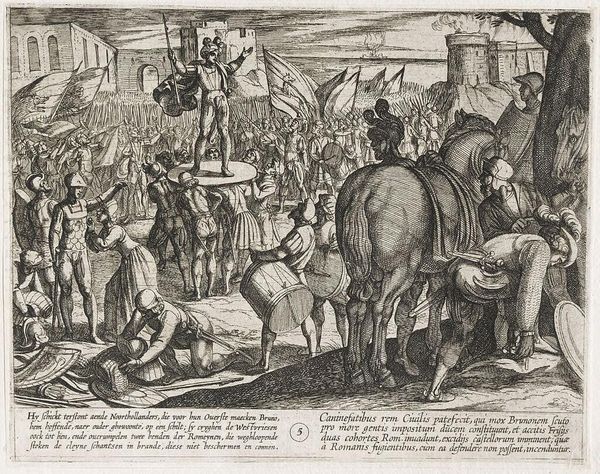
Spotprent op de strijd tussen arminianen en calvinisten over de geboeders De Witt en de prinsgezinden, ca. 1758 1756 - 1759
0:00
0:00
print, engraving
#
narrative-art
#
baroque
# print
#
pen illustration
#
caricature
#
old engraving style
#
history-painting
#
engraving
Dimensions: height 260 mm, width 265 mm
Copyright: Rijks Museum: Open Domain
This print, made around 1758 by an anonymous artist, visualizes the political struggles of the time. It’s a detailed engraving, a process involving carving an image into a metal plate, applying ink, and pressing it onto paper. Engraving allowed for the mass production of images, making political satire like this widely accessible. The sharp lines and intricate details are characteristic of the technique, requiring considerable skill and labor. This wasn't just art; it was visual propaganda, distributed among the public to sway opinion. Notice how the artist uses symbolic figures to represent different factions – the Arminians, Calvinists, and the supporters of the Prince. The bull likely symbolizes strength and aggression, looming over the scene. The act of engraving, typically associated with documentation and artistry, here becomes a tool for social commentary and political maneuvering. Ultimately, this print reveals how materials and making processes are always embedded in social and political contexts, challenging any separation of art from the everyday realities of labor, politics, and consumption.
Comments
No comments
Be the first to comment and join the conversation on the ultimate creative platform.
